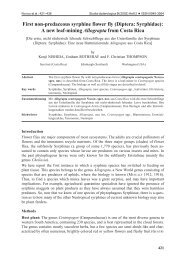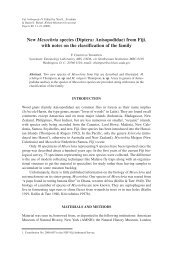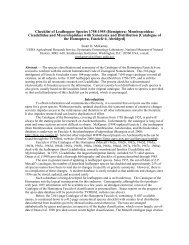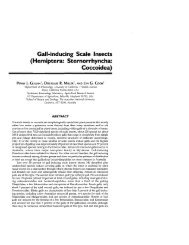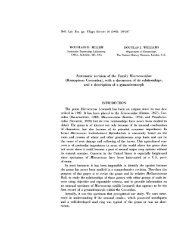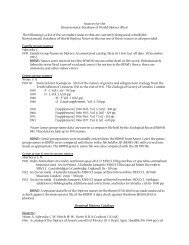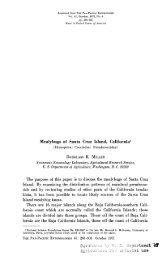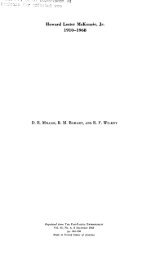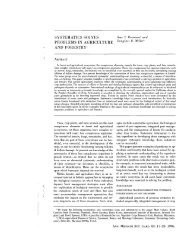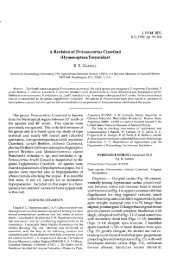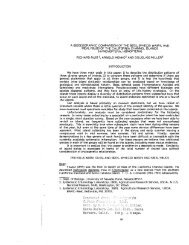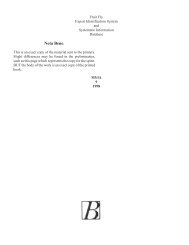A NEW SPECIES OF PUTa AND A PRELIMINARY ANALYSIS OF ...
A NEW SPECIES OF PUTa AND A PRELIMINARY ANALYSIS OF ...
A NEW SPECIES OF PUTa AND A PRELIMINARY ANALYSIS OF ...
Create successful ePaper yourself
Turn your PDF publications into a flip-book with our unique Google optimized e-Paper software.
JEFFERSONIANA 33<br />
puzzling. The present analysis includes kermesids and eriococcids as sister<br />
groups, but in a previous study (Miller & Miller, in press) the pseudococcids<br />
and eriococcids were hypothesized as sister groups. In the present<br />
paper, we included additional taxa and characters. Eight characters<br />
support the monophyli of the eriococcids and kermesids. Unfortunately,<br />
only two of these are non-homoplasious, and the majority of the<br />
homoplasy is in the form of convergences shared with the pseudococcid<br />
clade or the pseudococcid + the Puto group clade. We favor the results<br />
presented here since a complete penial sheath and invaginated tubular<br />
duets are complicated structures unlikely to have developed independendy,<br />
but this aspect of the phylogeny requires additional srudy.<br />
This work treats the adult males of more congeneric species than in<br />
any previous Coccoidea research. In the process of our examination, we<br />
studied adult males of 17 species of Puto including more than 50<br />
specimens. Because many species are represented by only one or two<br />
specimens, the results must be considered preliminary, but several<br />
conclusions merit special attention. There are two distinct groups of<br />
species within the genus: the first group (Puto antennatus, P. cupressi,<br />
P. sandini, and P. superbus) occurs on conifers and has a short, non·<br />
articulated aedeagus with a blunt apex similar to other pseudococcids; the<br />
other group (Puto albicans, P. ambiguus, P. antioquensis, P. arctostaphyli,<br />
P. atriplicis, P. calcitectus, P. decorosus, P. echinatus, P.<br />
kosztarabi, P. mexicanus, P. simmondsiae, P. uTter, and P. yuccae)<br />
occurs on other hosts and has a long, articulated aedeagus with a<br />
bifurcate tip. The opinion of Williams & de Willink (1992) that<br />
Macrocerococcus and Puto are synonyms is supported in this paper.<br />
However, if the conifer·infesting group were considered a separate genus,<br />
its generic name would be Macrocerococcus. We predict that other<br />
conifer-infesting species such as P. laticribellum, P. pricei, and P.<br />
profusus also will have males with a non-articulated aedeagus and a blunt<br />
apex.<br />
The species P. kosztarabi and P. calcitectus have males with two<br />
teeth that are removed from the apex of the aedeagus. The remaining<br />
species of Puto occurring on non-



